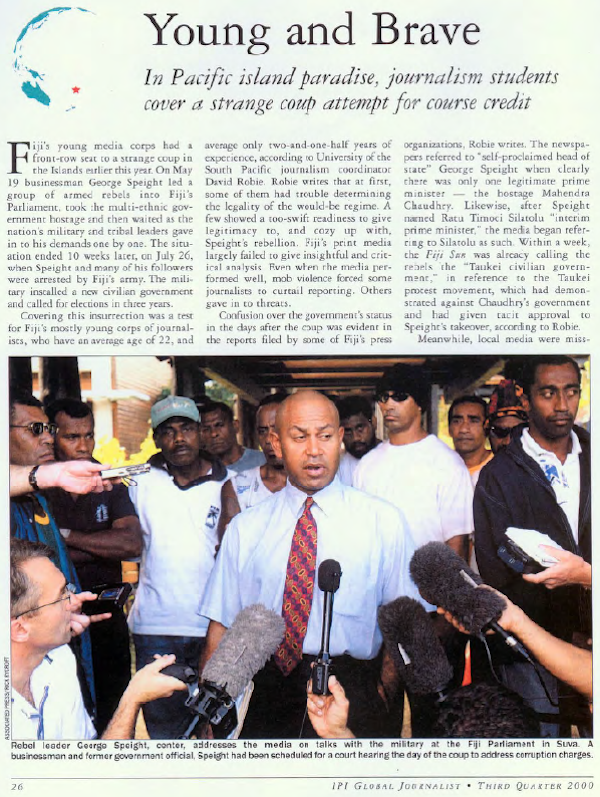By Sean Ransom, compiled from reports by USP journalism coordinator David Robie and USP student journalists Christine Gounder and Tamani Nair
Fiji’s young media corps had a front-row seat to a strange coup in the Pacific Islands in 2000.
On May 19, businessman George Speight led a group of armed rebels into Fiji’s Parliament, took the multi-ethnic government hostage and then waited as the nation’s military and tribal leaders gave into his demands one by one.
The situation ended ended 10 weeks later, on July 26, when Speight and many of his followers were arrested by Fiji’s army.

The military installed a new civilian government and called for elections in three years.
Covering this insurrection was a test for Fiji’s mostly young corps of journalists, who have an average age of 22, and average only 2.5 years of experience, according to University of the South Pacific journalism coordinator David Robie.
Robie writes that at first, some of them had trouble determining the legality of the would-be regime.
A few showed a too-swift readiness to give legitimacy to, and cozy up with Speight’s rebellion.
Fiji’s print media largely failed to give insightful and critical analysis.
Even when the media performed well, mob violence forced some shops to close their doors.
- Ransom, Sean. (2000, Third Quarter). Young and brave: In Pacific island paradise, journalism students cover a strange coup attempt for course credit. IPI Global Journalist.
- Read the full article here on Academia.edu
- Archive: USP student coverage of the ‘internet coup’ in Fiji 2000

